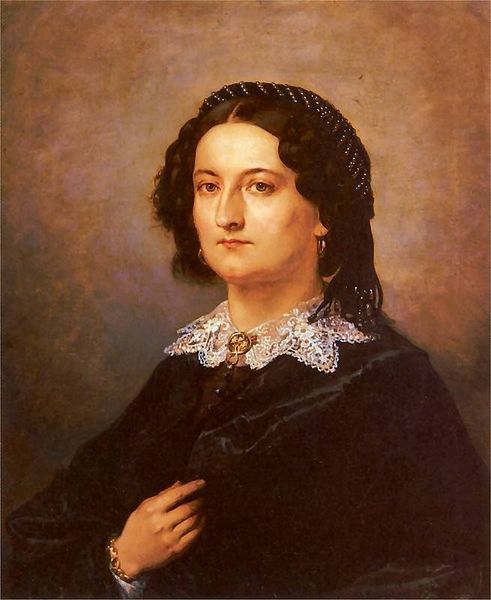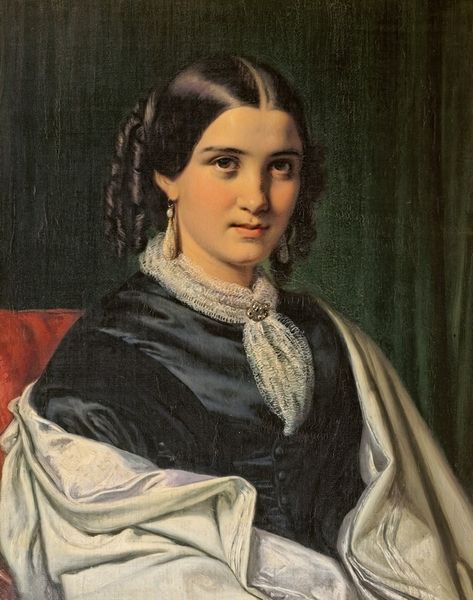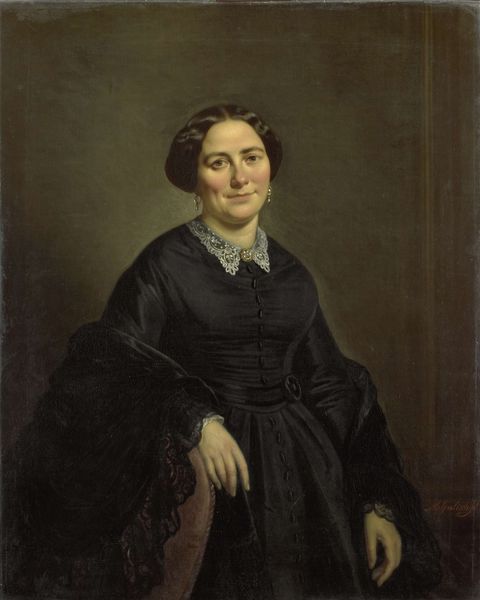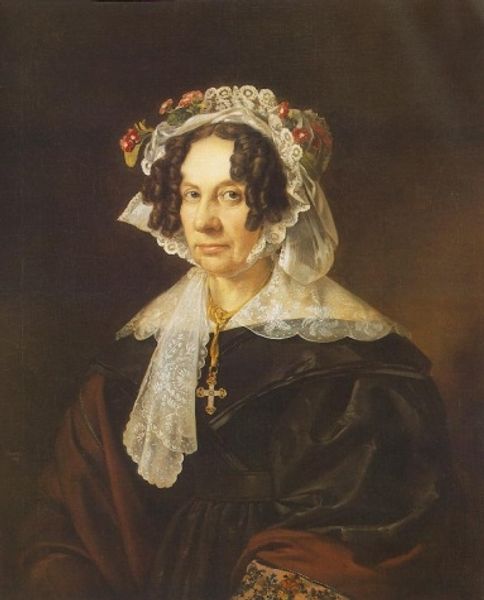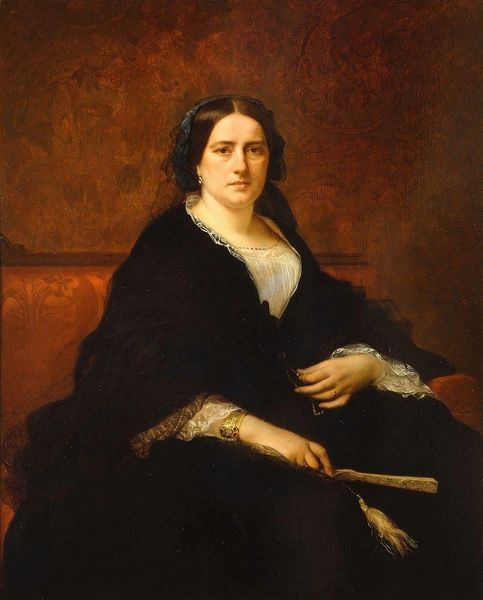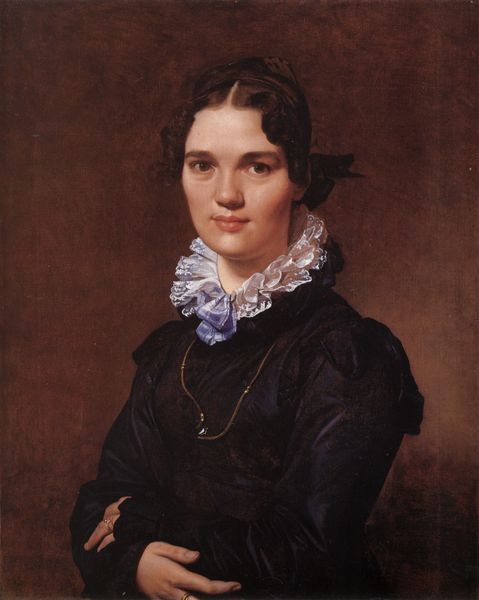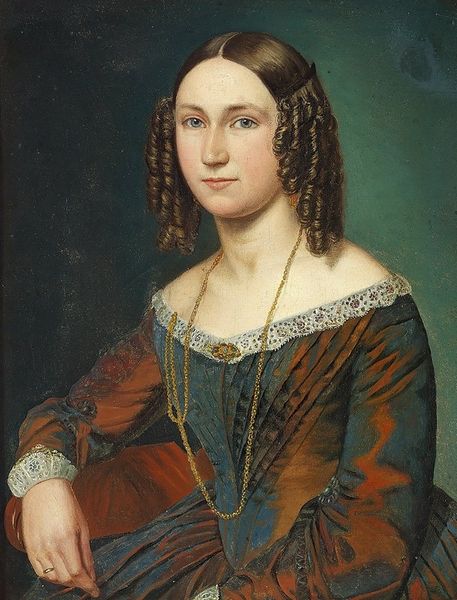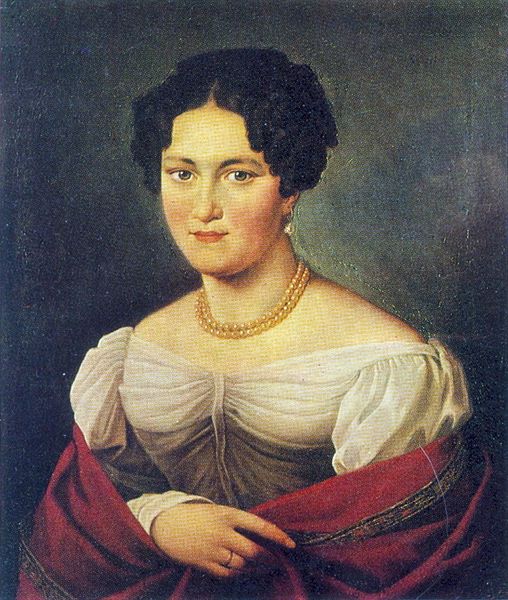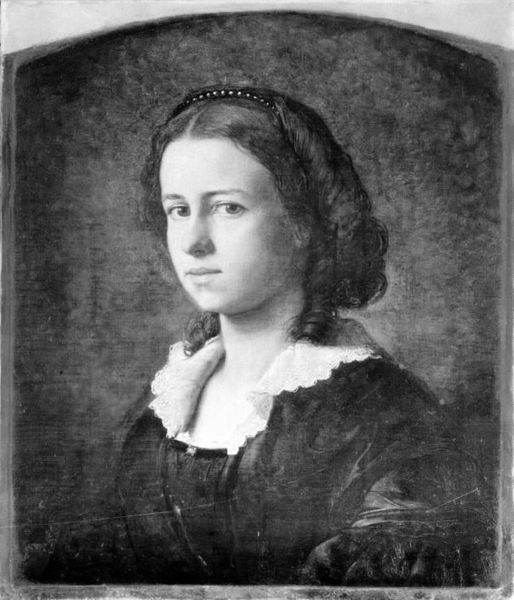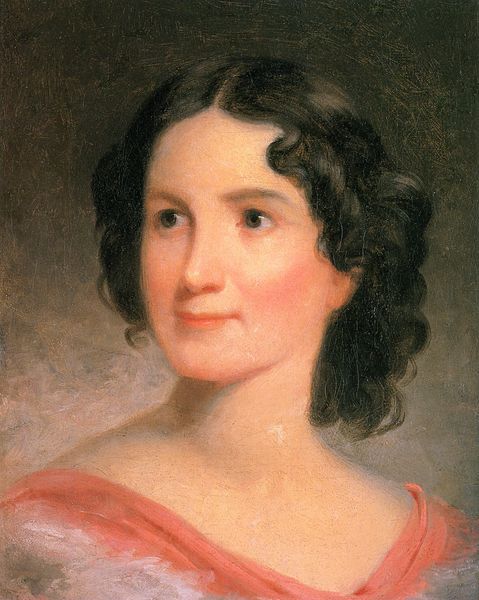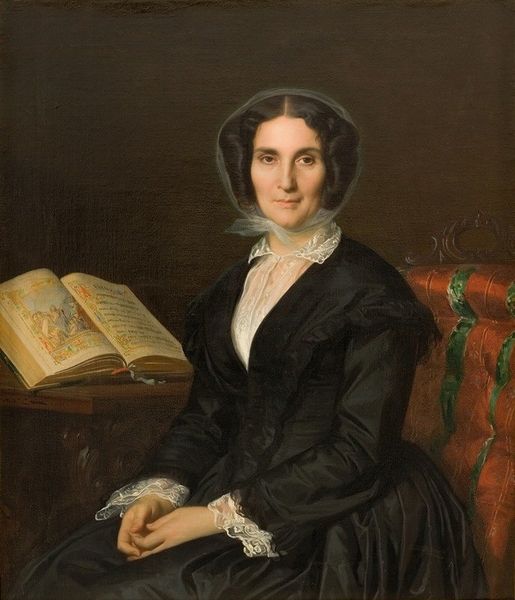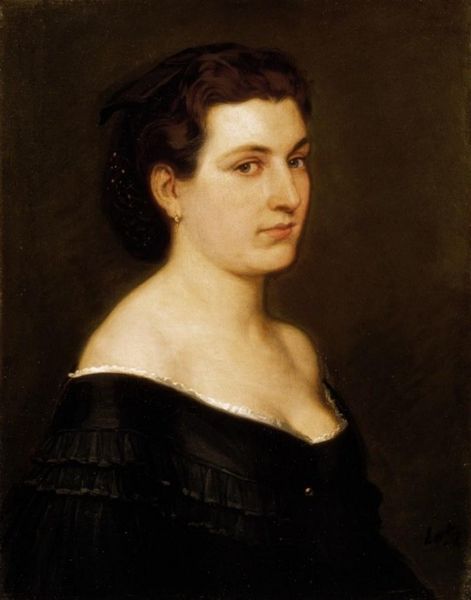
painting, oil-paint
#
portrait
#
painting
#
oil-paint
#
romanticism
#
genre-painting
#
academic-art
#
realism
Copyright: Public domain
Curator: Here we see Jan Matejko's portrait of Maria Maurizio. He was, of course, one of Poland's greatest historical painters. Editor: Yes, and immediately I'm struck by the sheer weight of that dark fabric, the density of color that pulls you in. Curator: Absolutely. And it's important to understand the context. Matejko was deeply concerned with Polish national identity and often used his art to address social issues. Here, with Maria Maurizio, it seems he wanted to present a figure embodying bourgeois values during a time of significant political upheaval. Editor: I see that, certainly. The figure's almost monumental pose, but it's tempered by the realism of the light. The textures alone, the lace, the book’s gold trim—the overall composition gives the viewer access to an individual in great detail. Curator: Note the positioning of the hands. Clasped around a book. It's a subtle statement about knowledge and virtue in the role of women within society. He was a master of these narrative details, embedding larger socio-political themes within the intimate settings of domesticity. Editor: The muted color palette, though, almost obscures her. The portrait’s power isn't located in overt displays of wealth, but instead is drawn into the somber tones of brown and black; look at how those draw your eyes upwards towards her expression. The angle is almost confrontational, as her steady gaze challenges any possible assumption about the sitter. Curator: Exactly! The composition reflects the larger role art plays. It served not only as artistic expression, but also to cultivate and promote particular social values and Polish national identity during periods of cultural repression. Editor: It’s truly remarkable to observe Matejko's eye. Beyond context, even today this attention to capturing Maria’s gaze and textures is, above all, visually captivating. Curator: Yes, precisely the interweaving of societal roles reflected in aesthetic form is a lasting appeal. Editor: Ultimately it seems to be about revealing not just identity, but the silent narrative of Maria Maurizio herself.
Comments
No comments
Be the first to comment and join the conversation on the ultimate creative platform.
